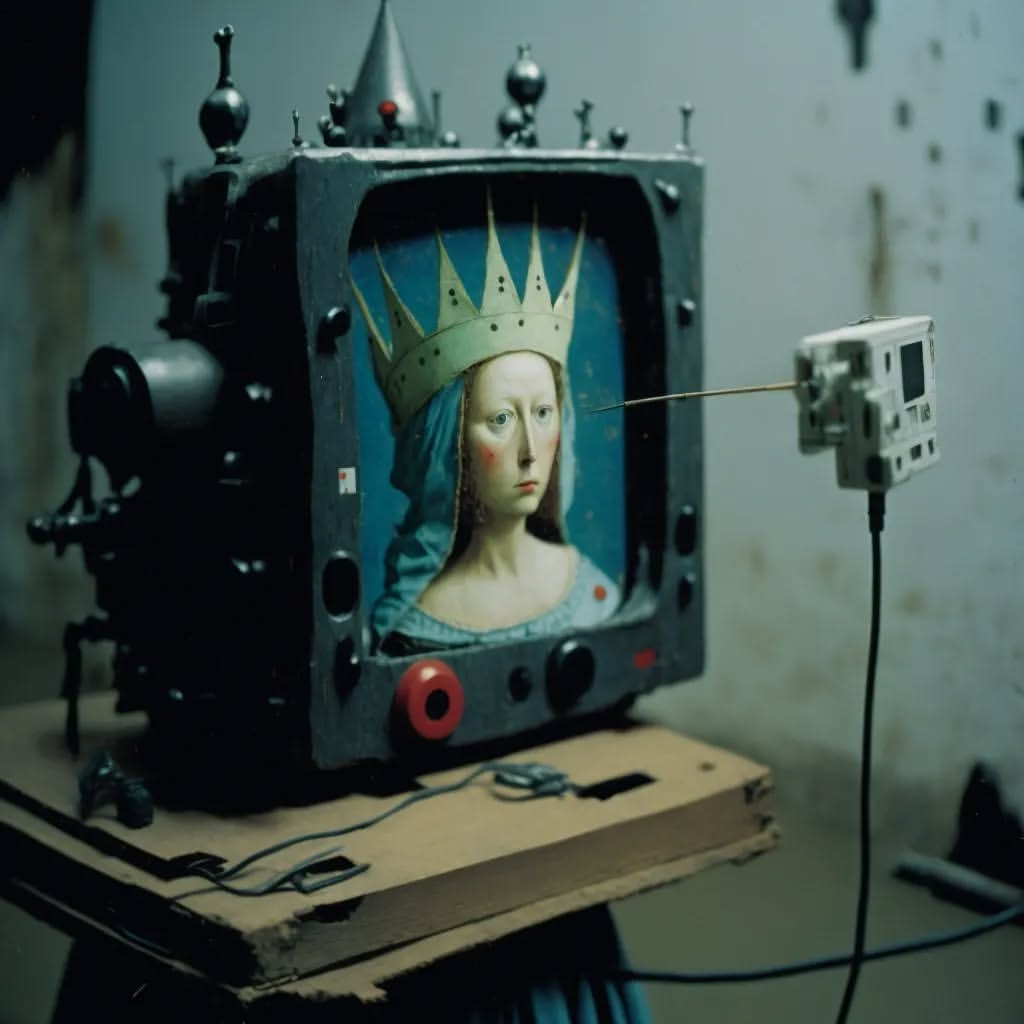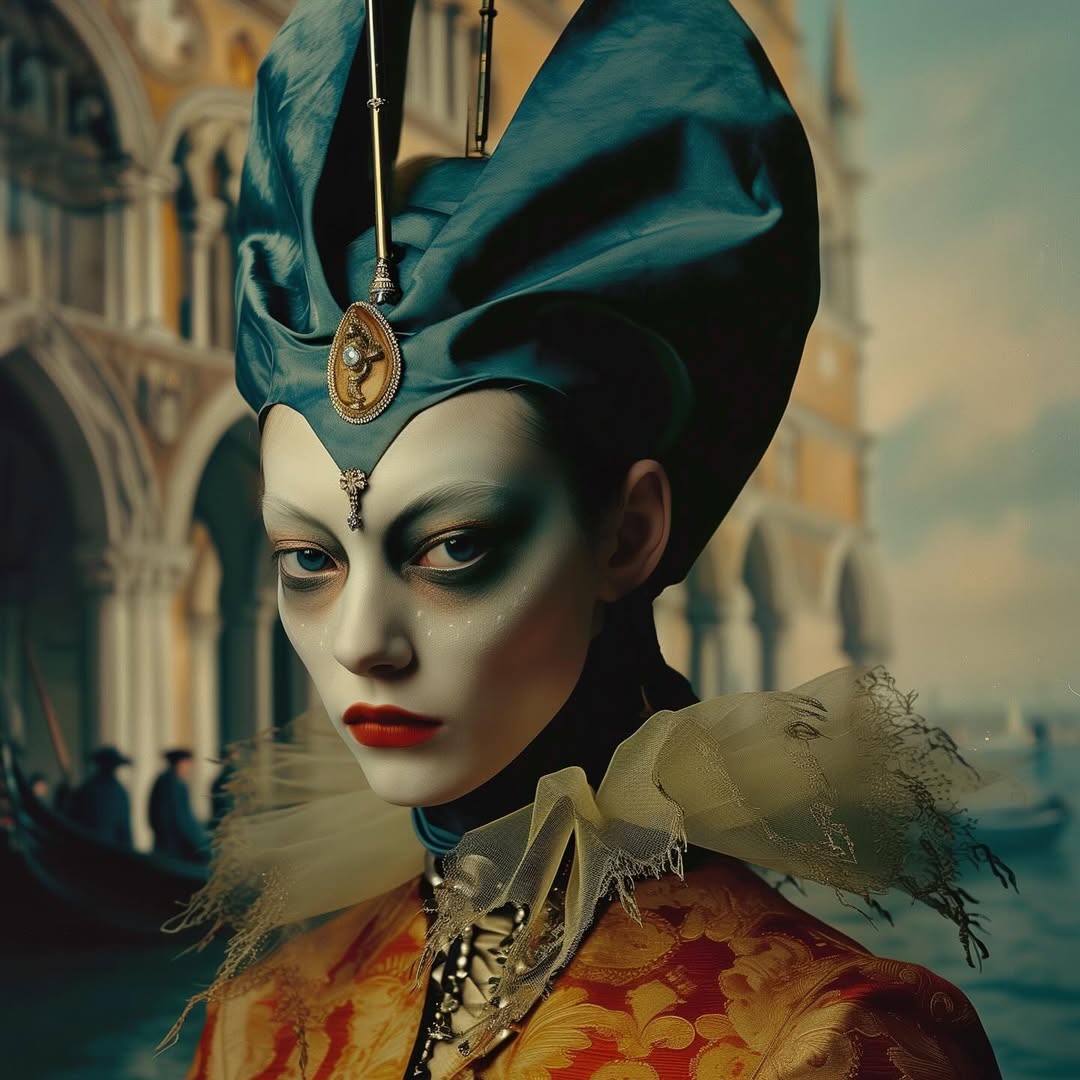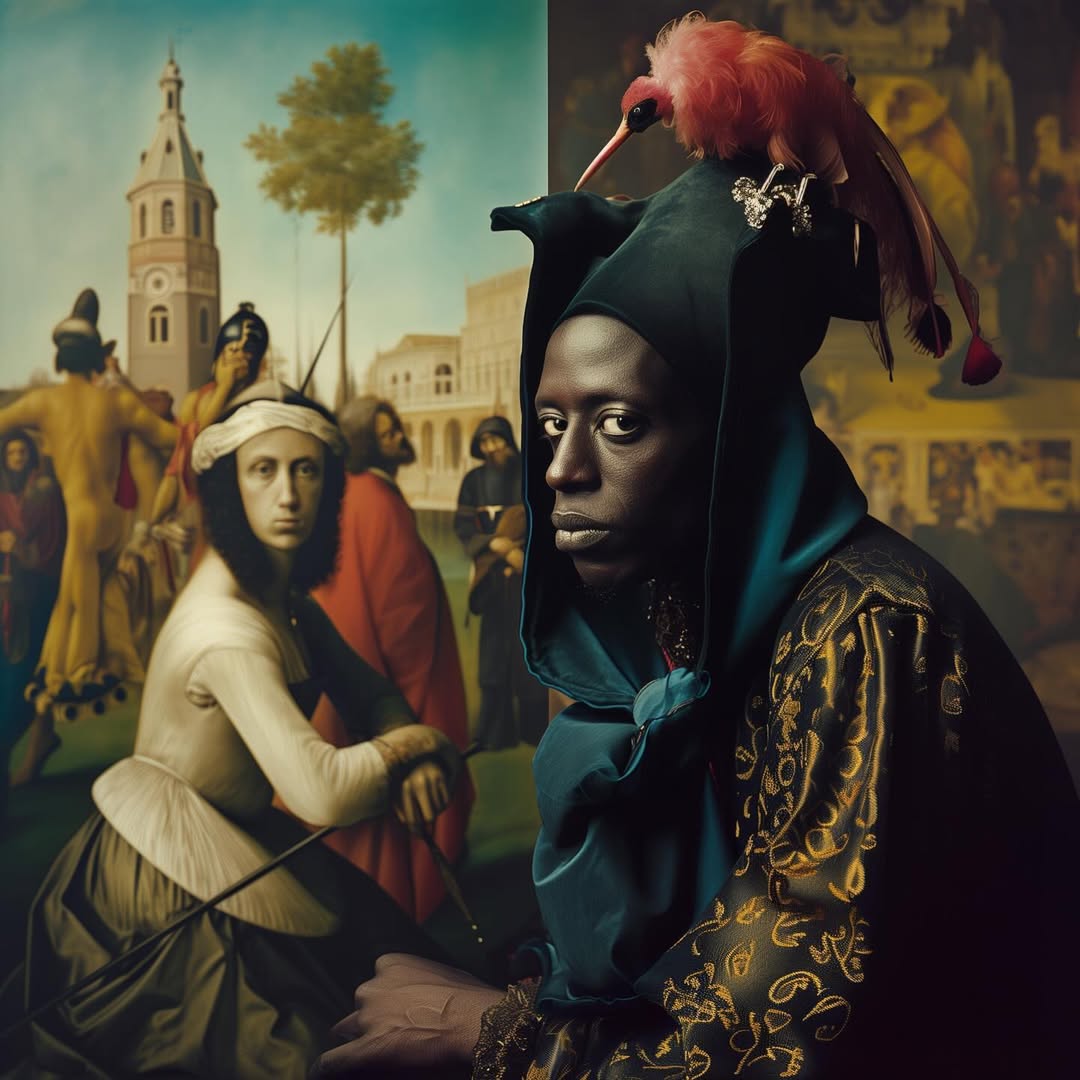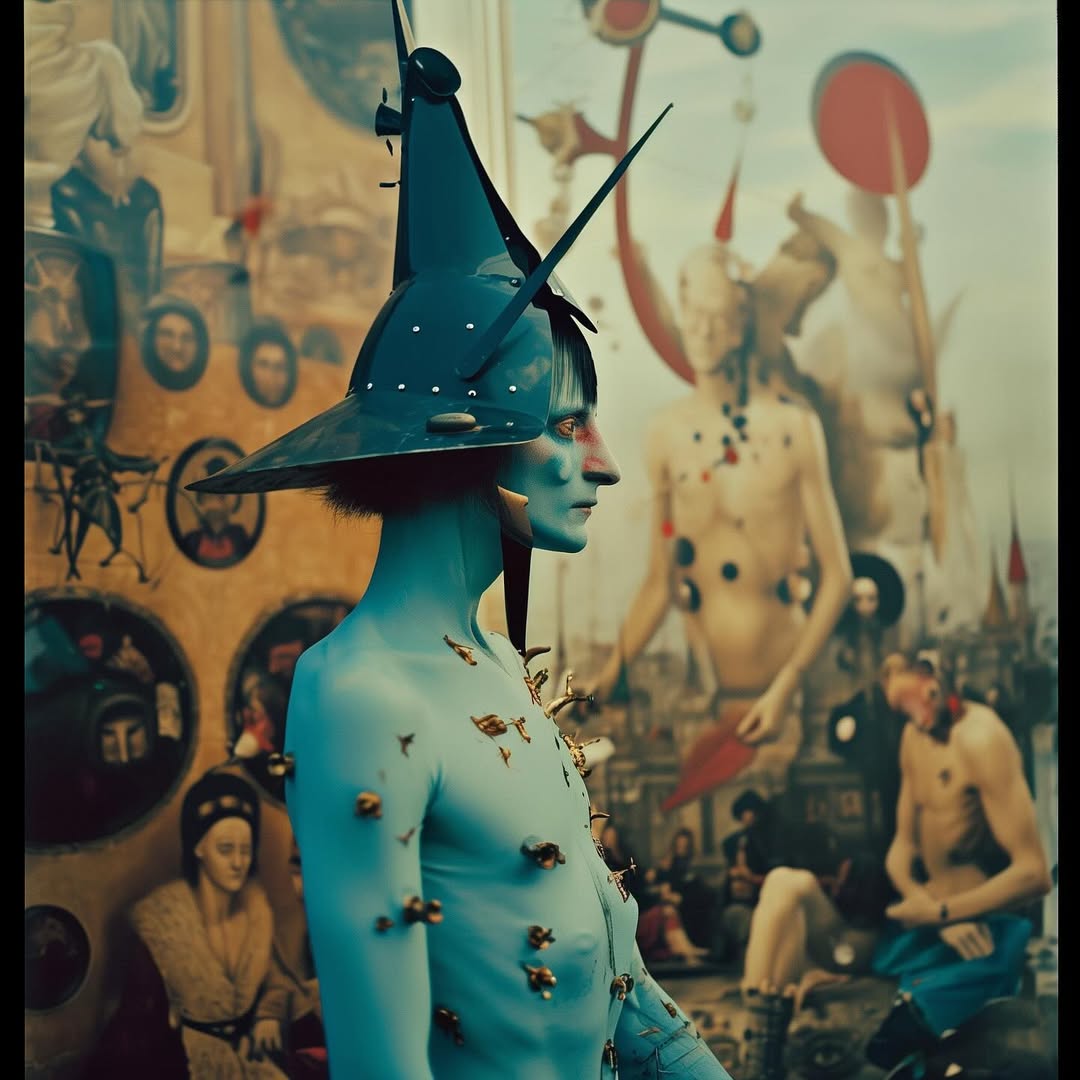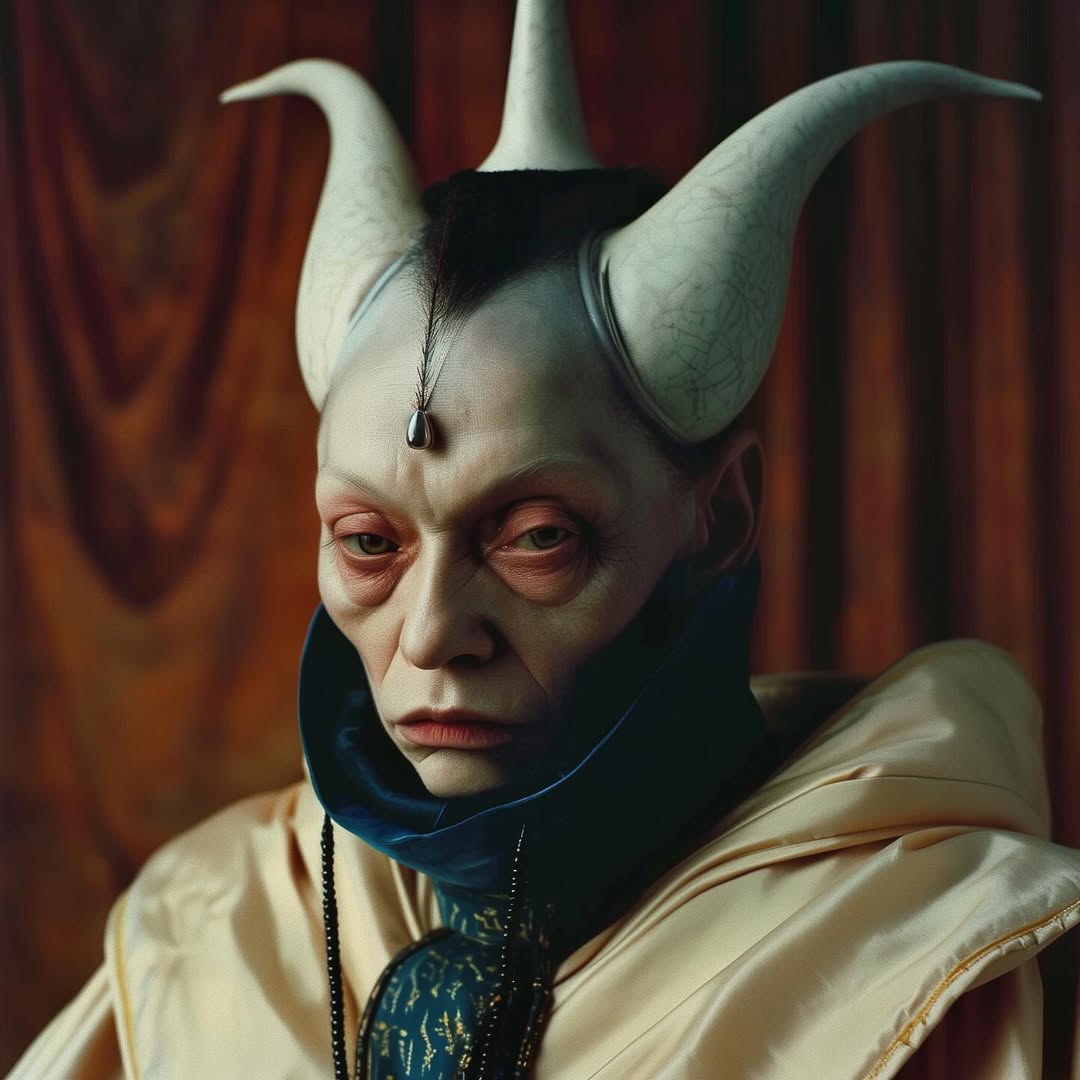Re-aimagining Medieval & Early Renaissance Masters
aithena art magazine newsletter
From Data to Dream: AI Art, Shaped by Thought
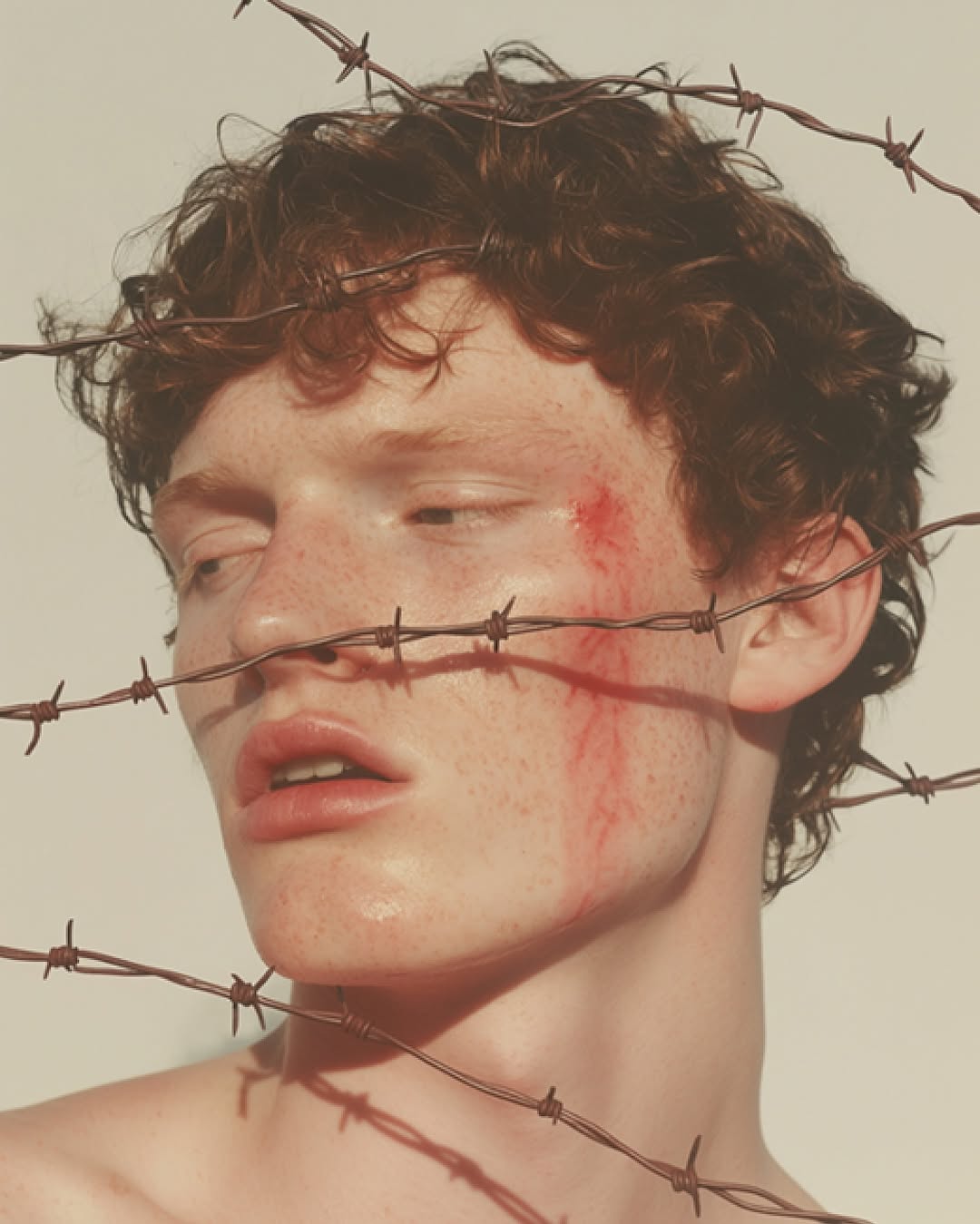
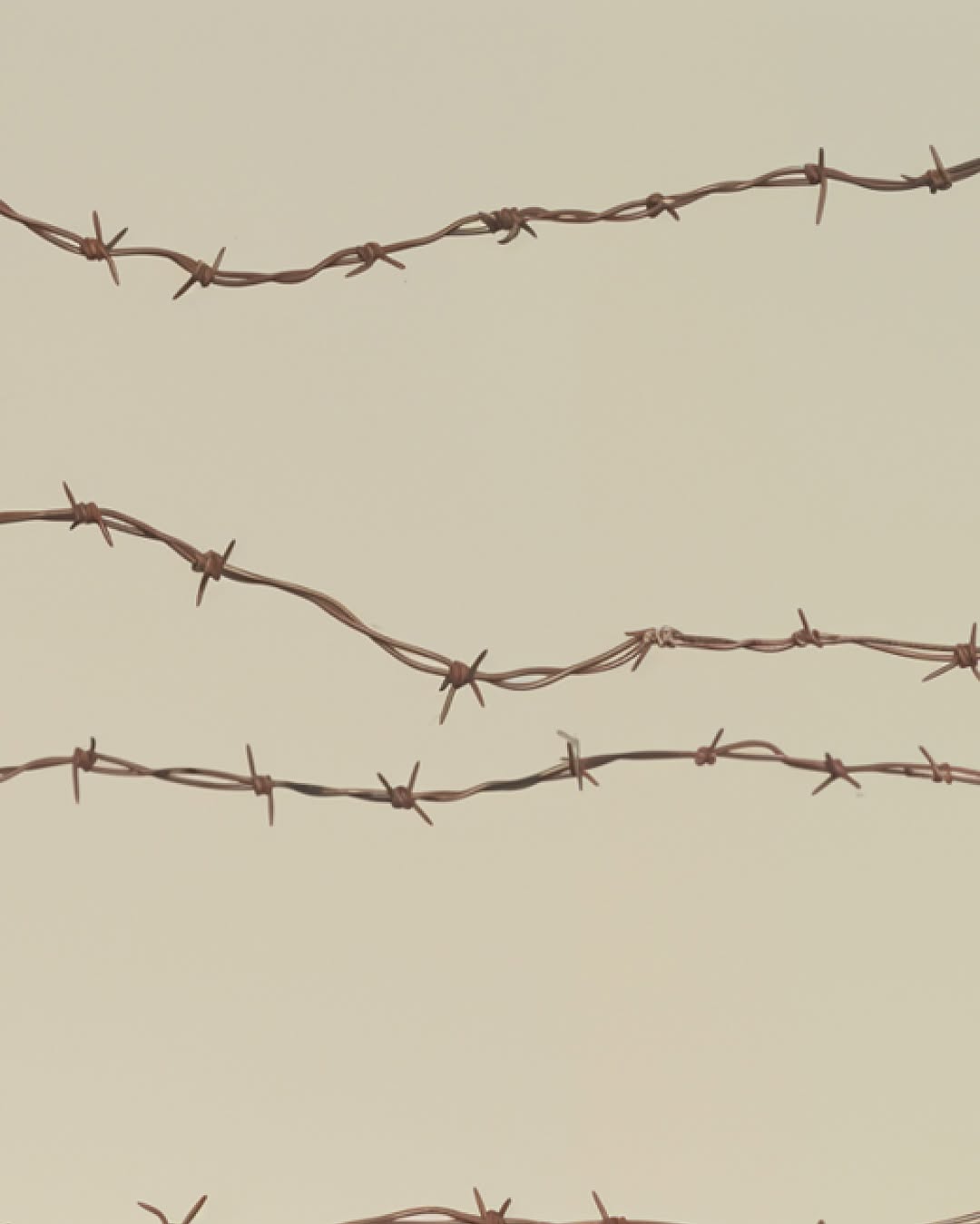
you’re living in the world full of opportunities, however…
Art by @damn.ait
A user on Reddit, J, asked, “Why do so many generative AI images look like works of art by Hieronymus Bosch?” To which M responded, “I have a theory that ChatGPT is slowly opening a portal to hell.”
In the Altered Histories movement within ai art, creators engage in a form of temporal dislocation, borrowing from the well of historical art to reframe it in the context of modern sensibilities. Artists reimagine iconic works, art movements, and moments from history, blending them with contemporary culture and ideas. Using generative art tools, these artists recontextualize classical art, creating a meta new form of artistic expression. Gen art tools would not exist without being trained on vast datasets of the world’s art, much to the chagrin of many traditional artists. This new art becomes more than a dialogue between time and culture; it also reflects the very systems that enable its creation.
Hieronymus Bosch (c. 1450–1516), a key figure in the Early Netherlandish painting school, is known for his fantastical depictions of humanity’s flaws, sins, and vices. His works, like The Garden of Earthly Delights, blend religious imagery with bizarre creatures, strange animals, and surreal landscapes, offering dream-like scenes that reflect humanity’s temptations and fears within a medieval religious framework.
This week, we’ll focus on AI art that explores altered histories from late medieval to early Renaissance art. Let’s start with Carla Gannis’ 2014 large-scale digital artwork, Garden of Emoji Delights, which incorporates emojis and gifs and served as a precursor to the kind of art ai is capable of producing today, blending historical references with contemporary digital symbols. Filippo Nassetti used early AI art tools to place spaceships into the painted worlds of Bosch and Caravaggio, in 2022.
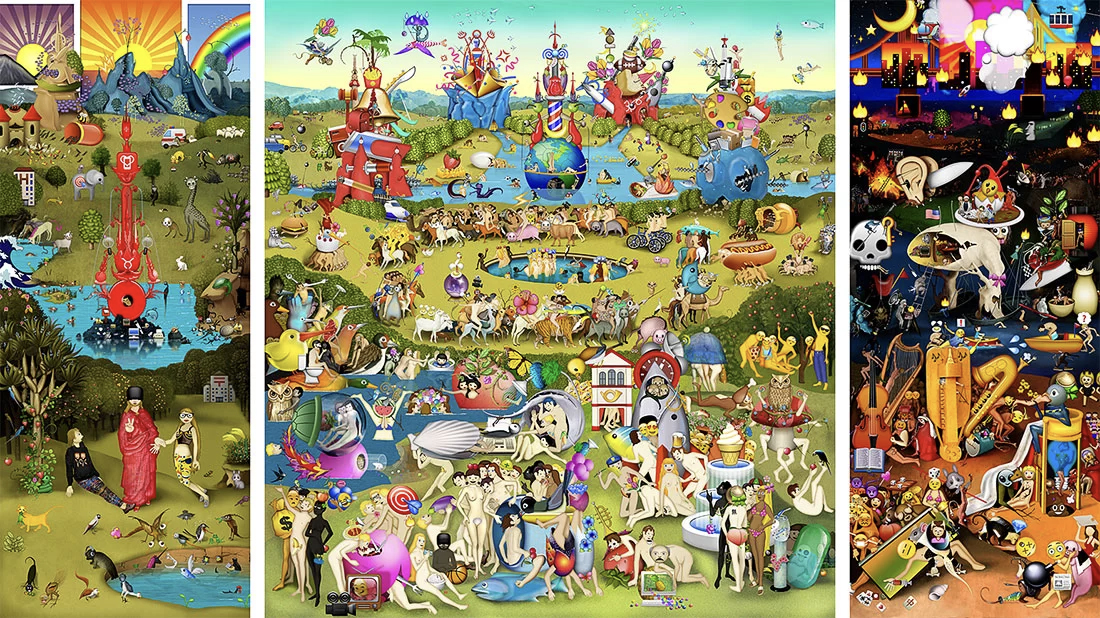
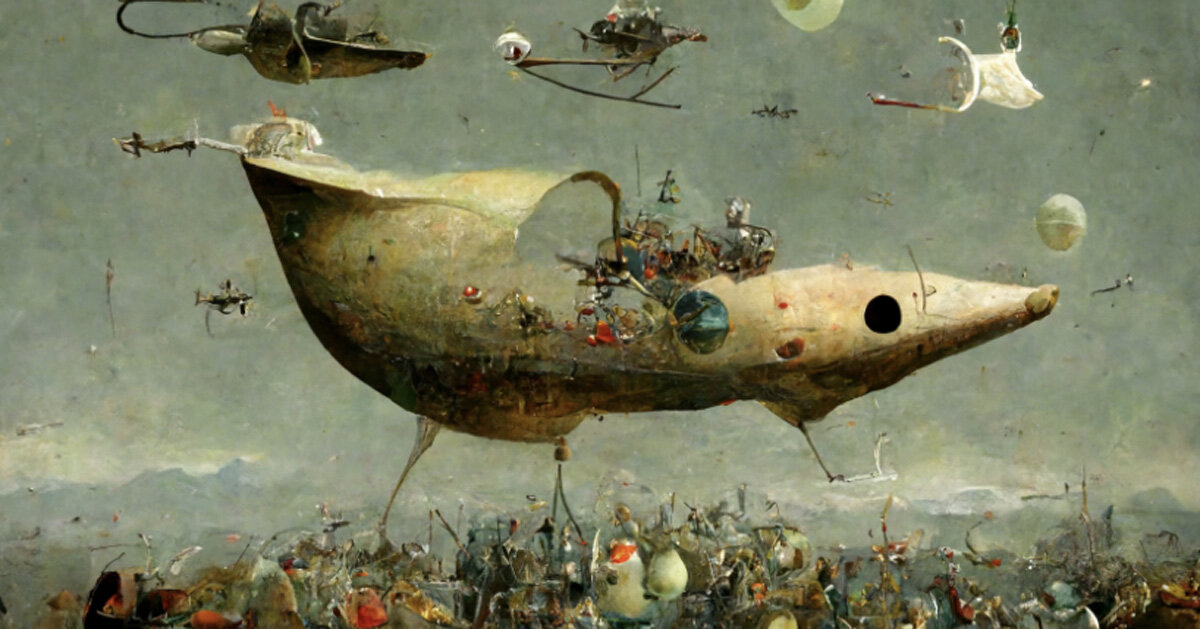
To keep this brief, I’ll pause here and highlight the featured AI artists from this issue on the magazine’s website which you can see in full, if you click on their names.
In this selection of her ai art work, analog.fool draws inspiration from the opulence of classical Renaissance art, reimagining sun gods with halos like those of gold leaf painted saints, silvery sallets and armoured Putti, fierce and beautiful.
bvstard.ai, a London-based artist, created these two series, Colophon and Fairy Tales, drawing inspiration from the likes of Albrecht Dürer’s medieval woodcuts, blending bearded men and bestiary creatures with modern graphic aesthetics.

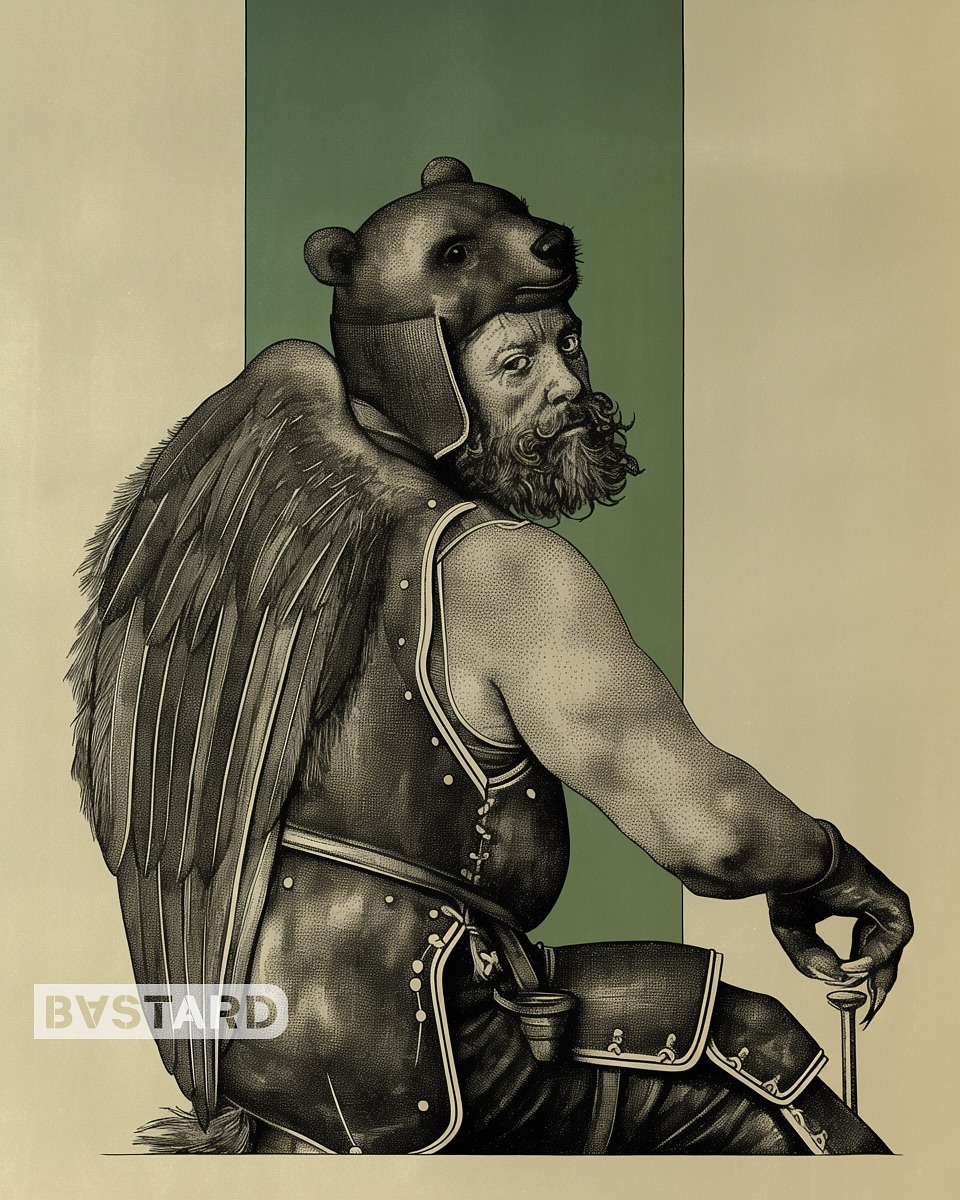
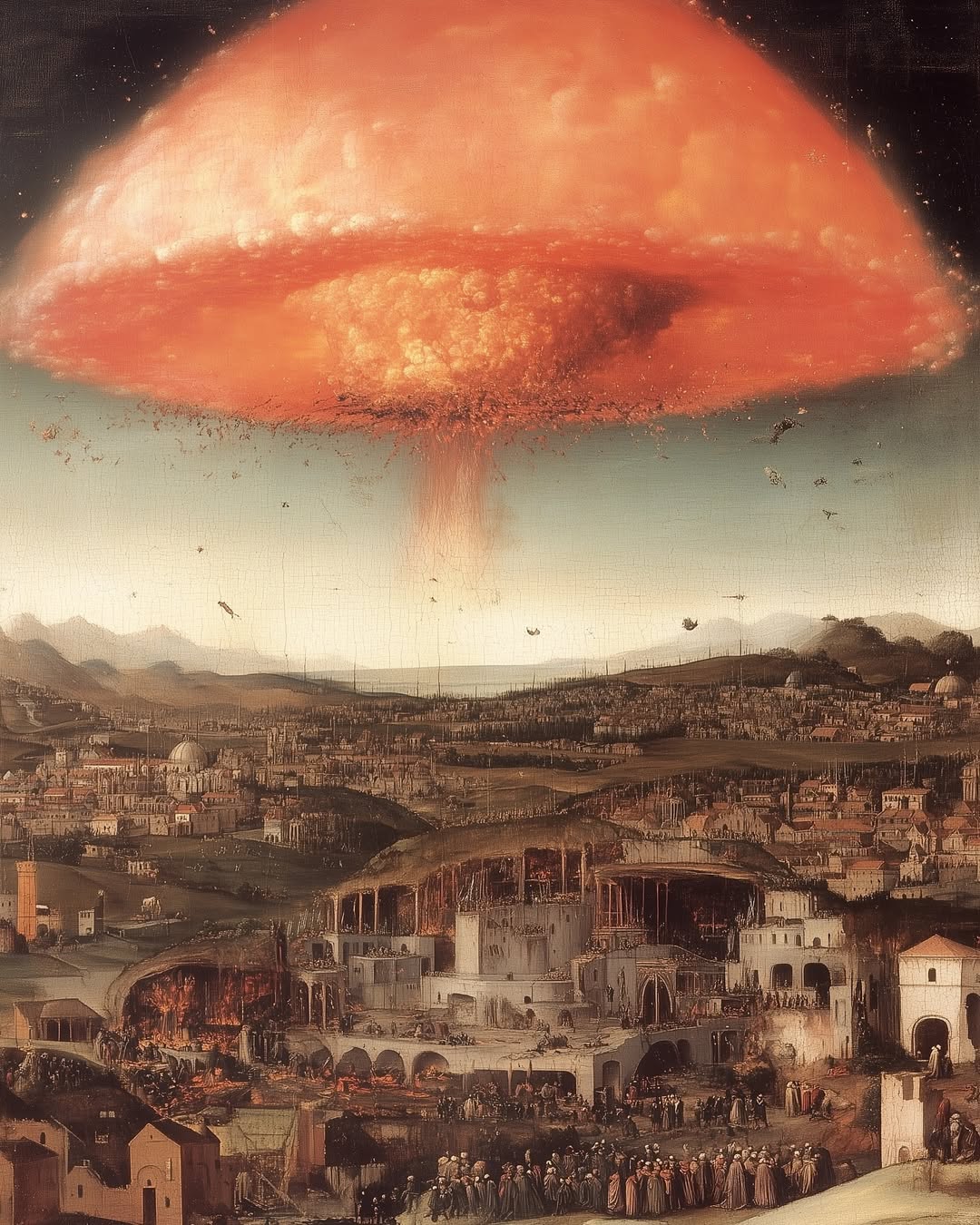
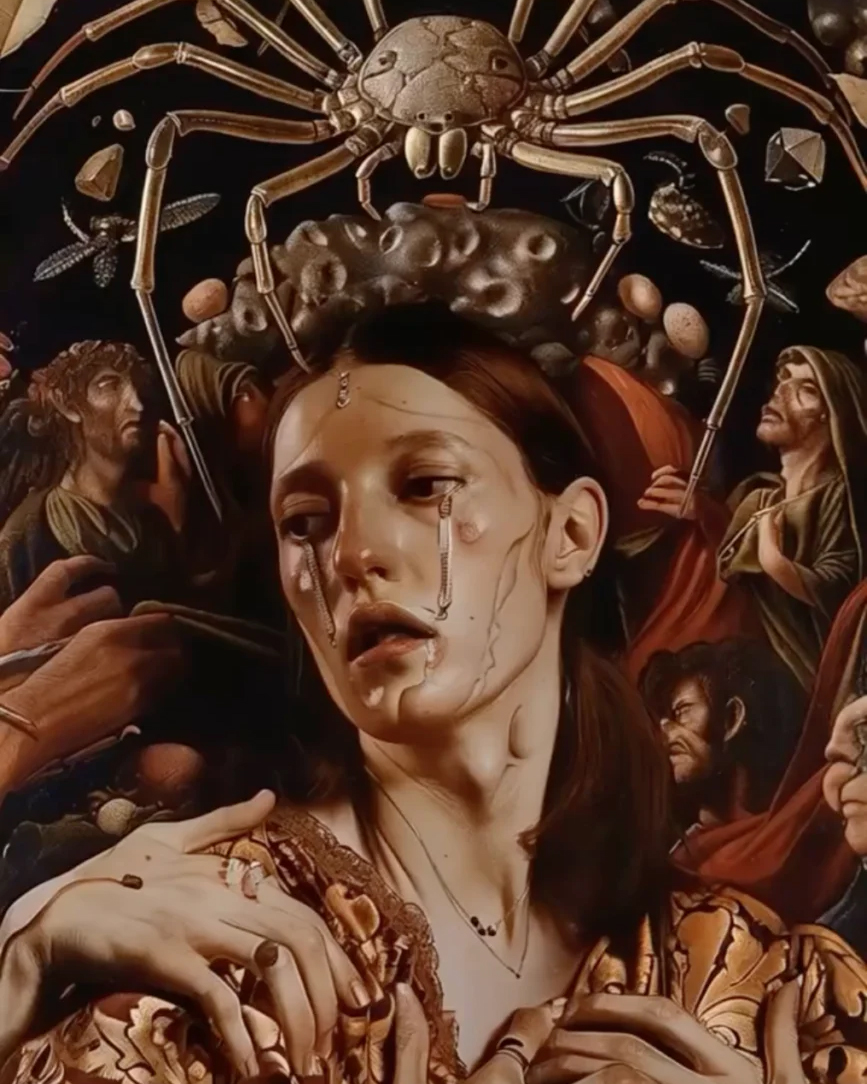
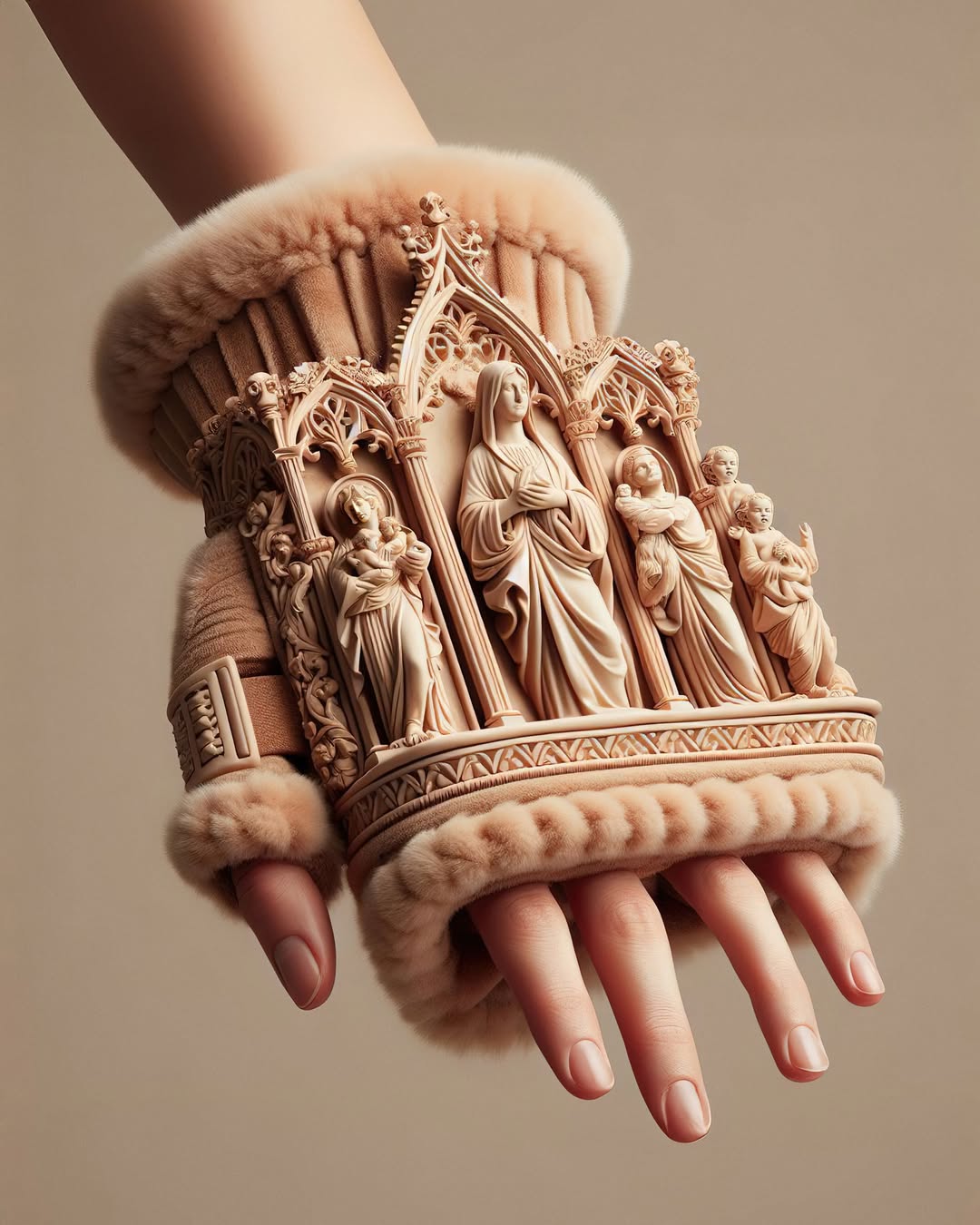
Injecting sci-fi into old-world art styles, kunstkammerai creates a unique mix of the past and future. His AI-driven landscapes channel the detailed scenes of Bosch or Pieter Bruegel the Elder, with a twist—a black alien object or futuristic fireball structures dominate the sky, one moment ablaze, the next spitting out souls. See also his altered fashion and animalia.
Explore four short AI-generated videos created by seneh.xyz. Each takes a wildly creative, hilarious, and slightly gross approach to Dante’s Inferno merged with the art style of Hieronymus Bosch’s nightmarish worlds. The videos transform the infamous realms of Hell into bizarre, absurd playgrounds full of quirky, grotesque humor.
str4ngething takes the grandeur of Renaissance art and architecture and gives it a fun, modern twist. Obsessed with history, time, physics, and the Mandela Effect str4ngething transforms classical elements—arches, columns, gargoyles and intricate details—into playful, hip works that reflect today’s fashion and culture.
An AI-generated diptych (above) by damn.ait of a male face obscured by barbed wire evokes the suffering and sacrifice seen in Renaissance art, particularly in the works of artists like Matthias Grünewald, whose Isenheim Altarpiece depicts Christ’s agonizing passion. The barbed wire symbolizes a modern reinterpretation of Christ’s or all human torment, suggesting contemporary feelings of alienation.
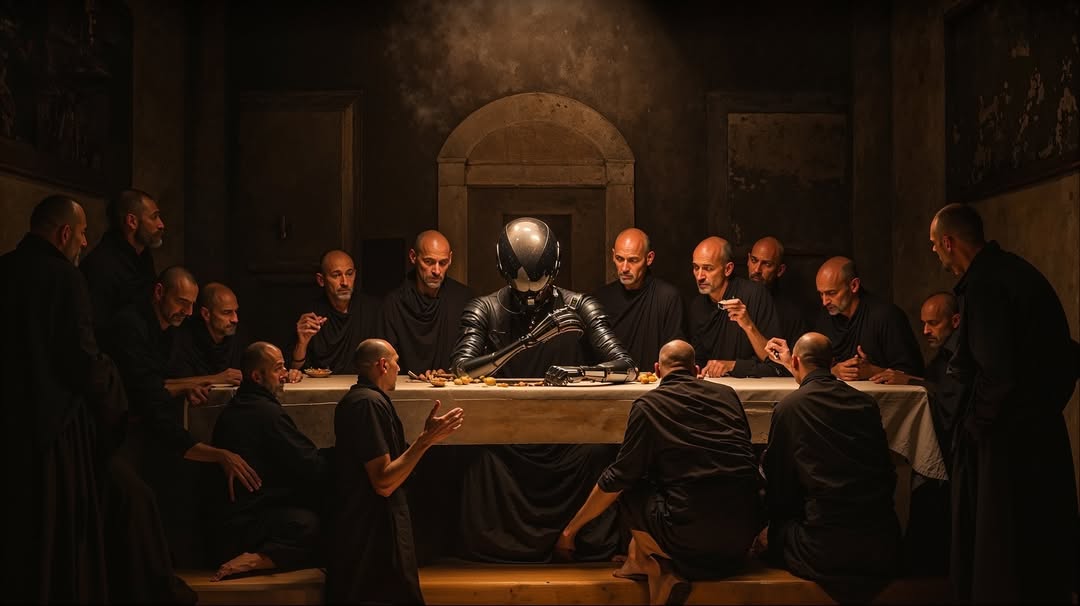
The Last Supper in Renaissance art reflected spiritual devotion, while plague masks served as a stark reminder of the devastation of disease. In these two humorous images, the Christ figure is replaced with a robotic spaceman. The figures in the second image are more focused on their devices than on fear of death, highlighting a modern detachment from the medieval concerns of life and death.
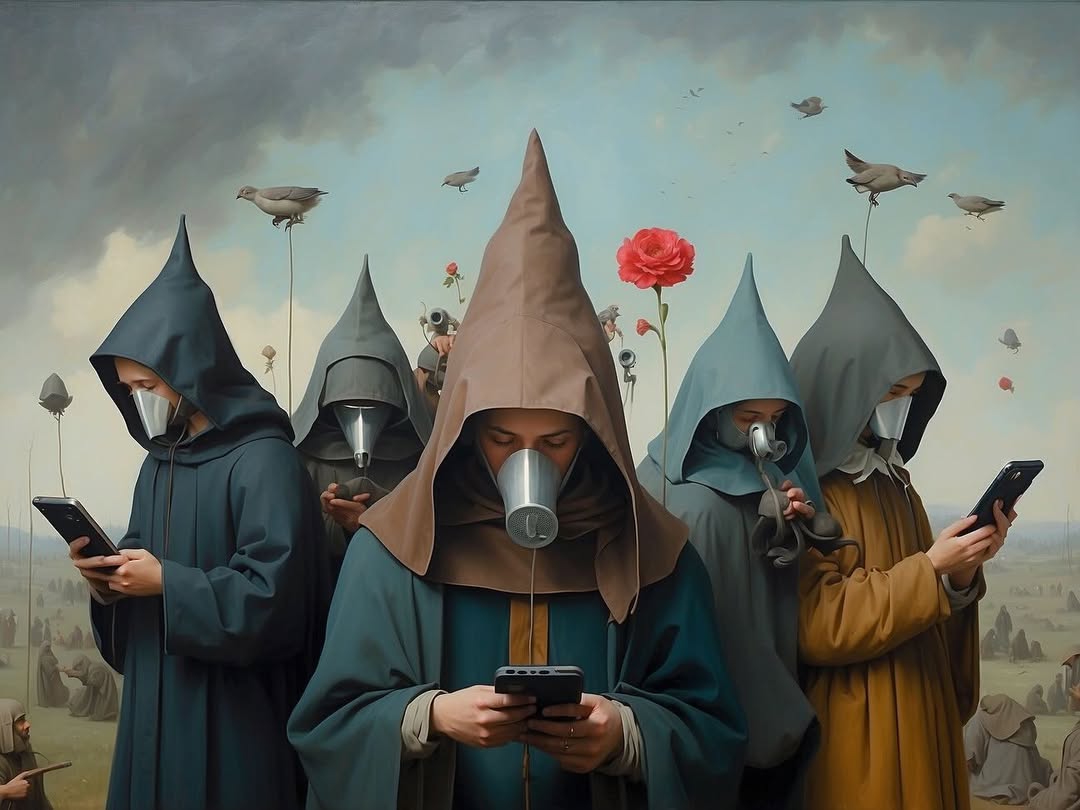
The next two examples showcase more typical uses of AI tools for image generation. In the top row, we see humorous images created in a style known as medieval manuscript, generated for flux and linked via an account that shares ai news and education, hellocivitai. In the lower row, a fan of medieval, graphical fantasy RPG content, richo.ai shares realistic and very well-crafted images created with Midjourney. However these examples do not necessarily represent “art” for me, seeming to lack a subjective interpretation or deeper meanings from the creators
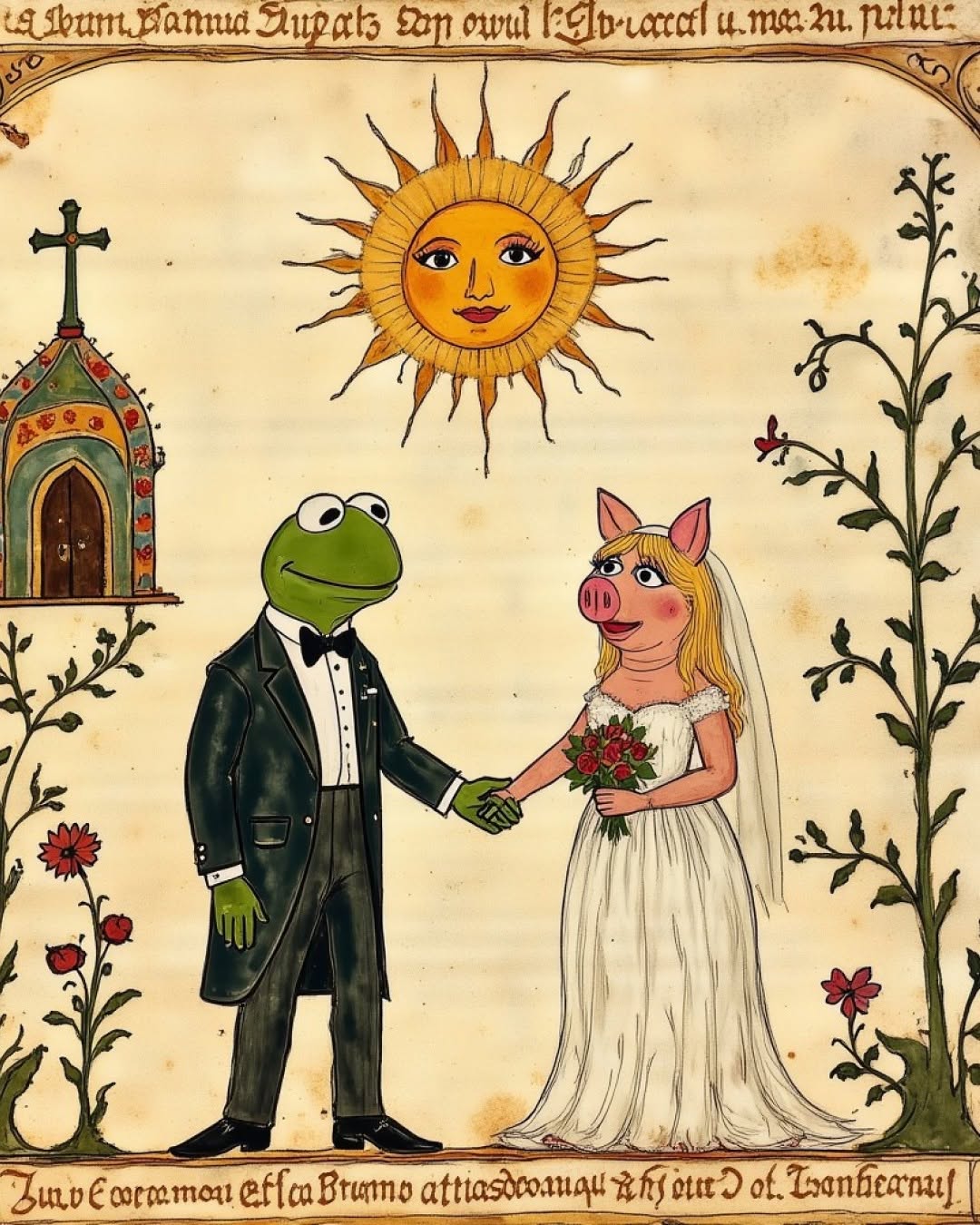
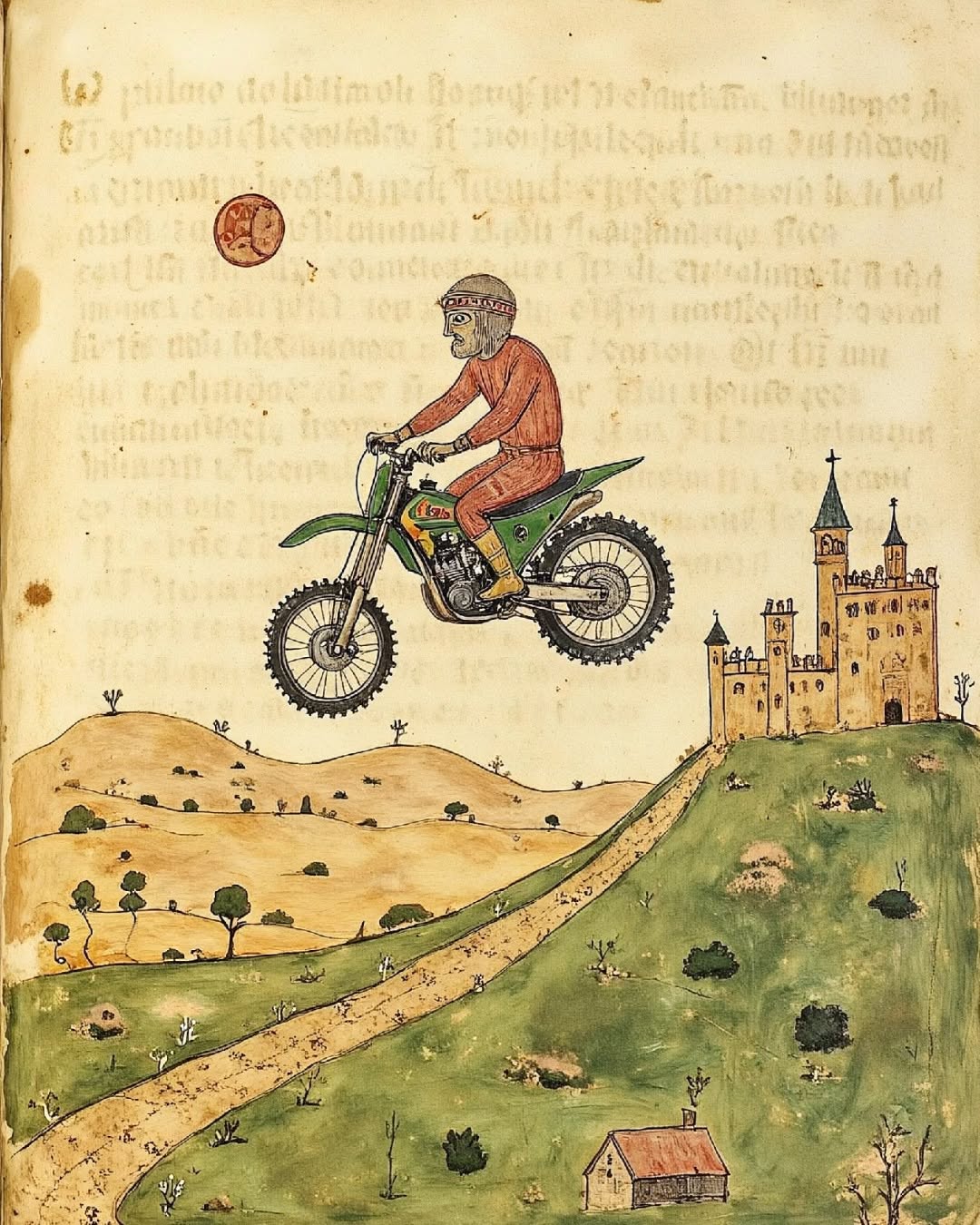
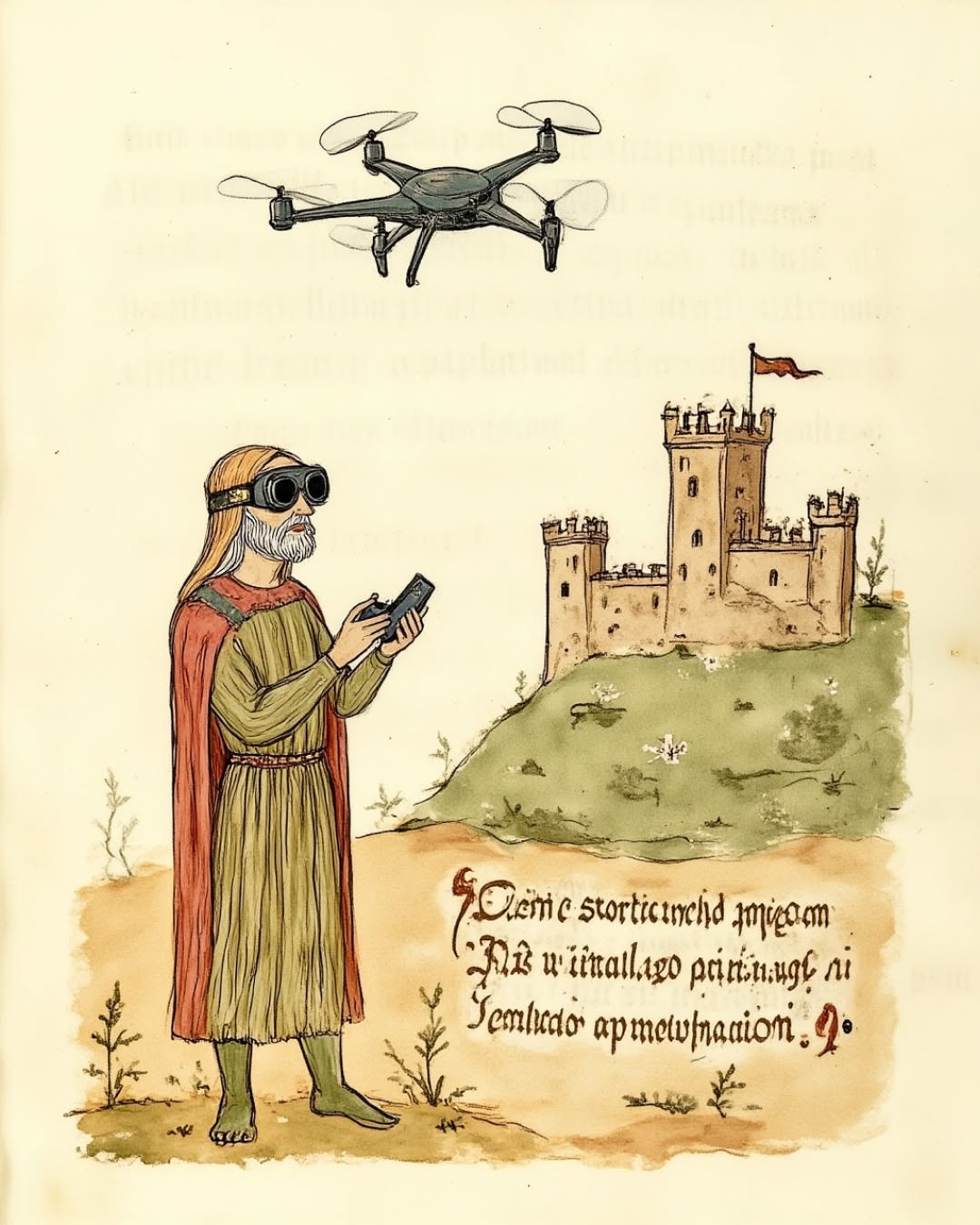
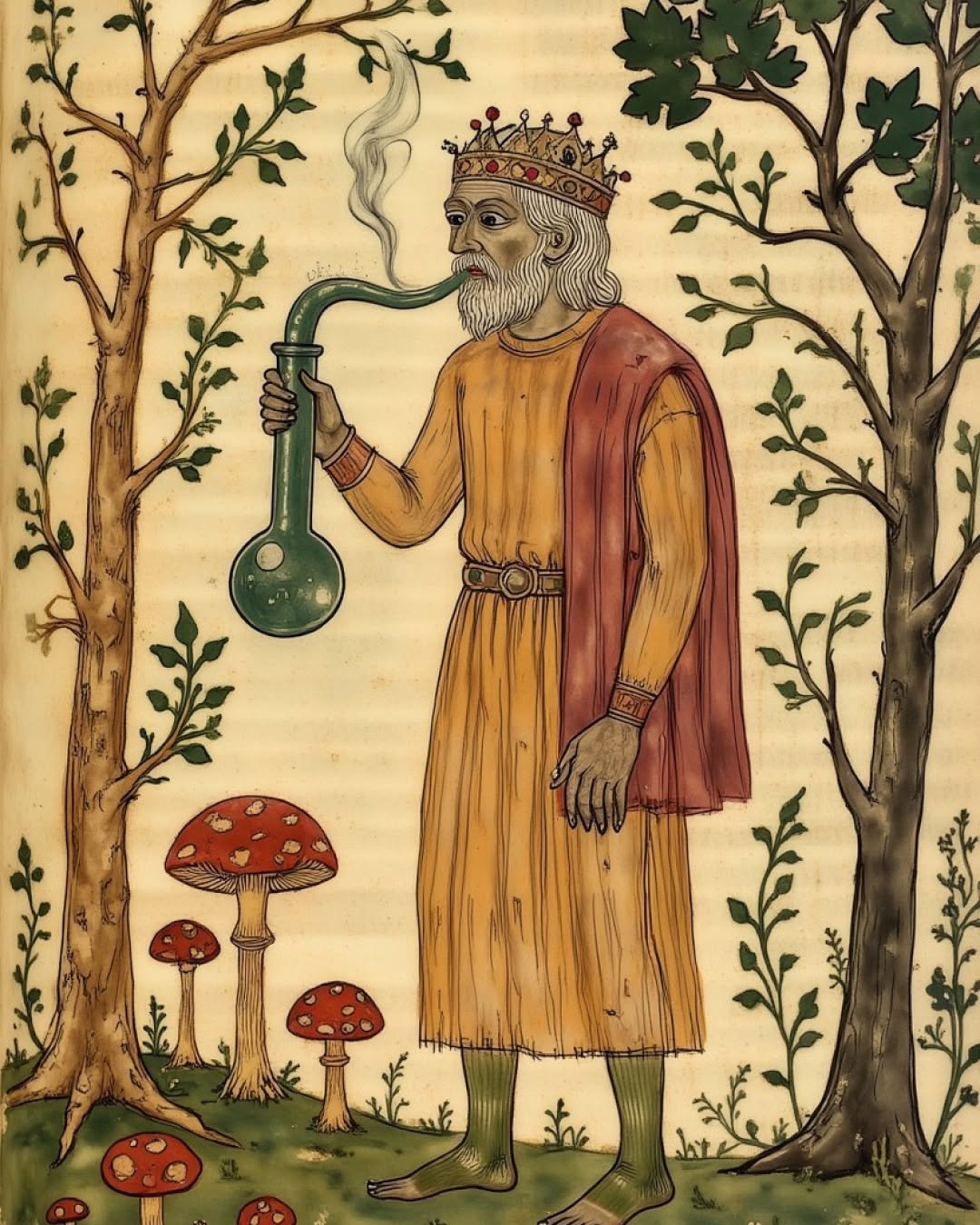
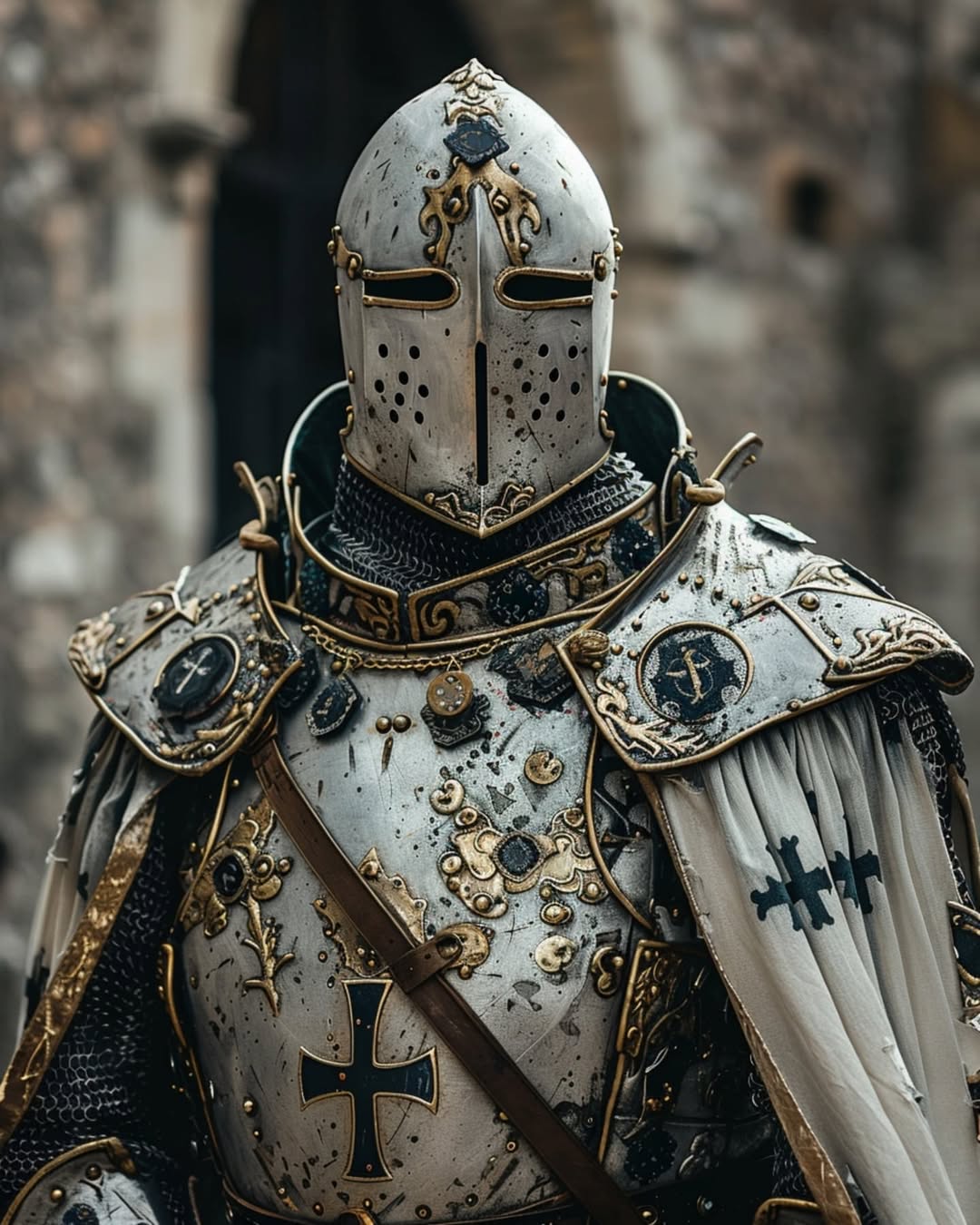
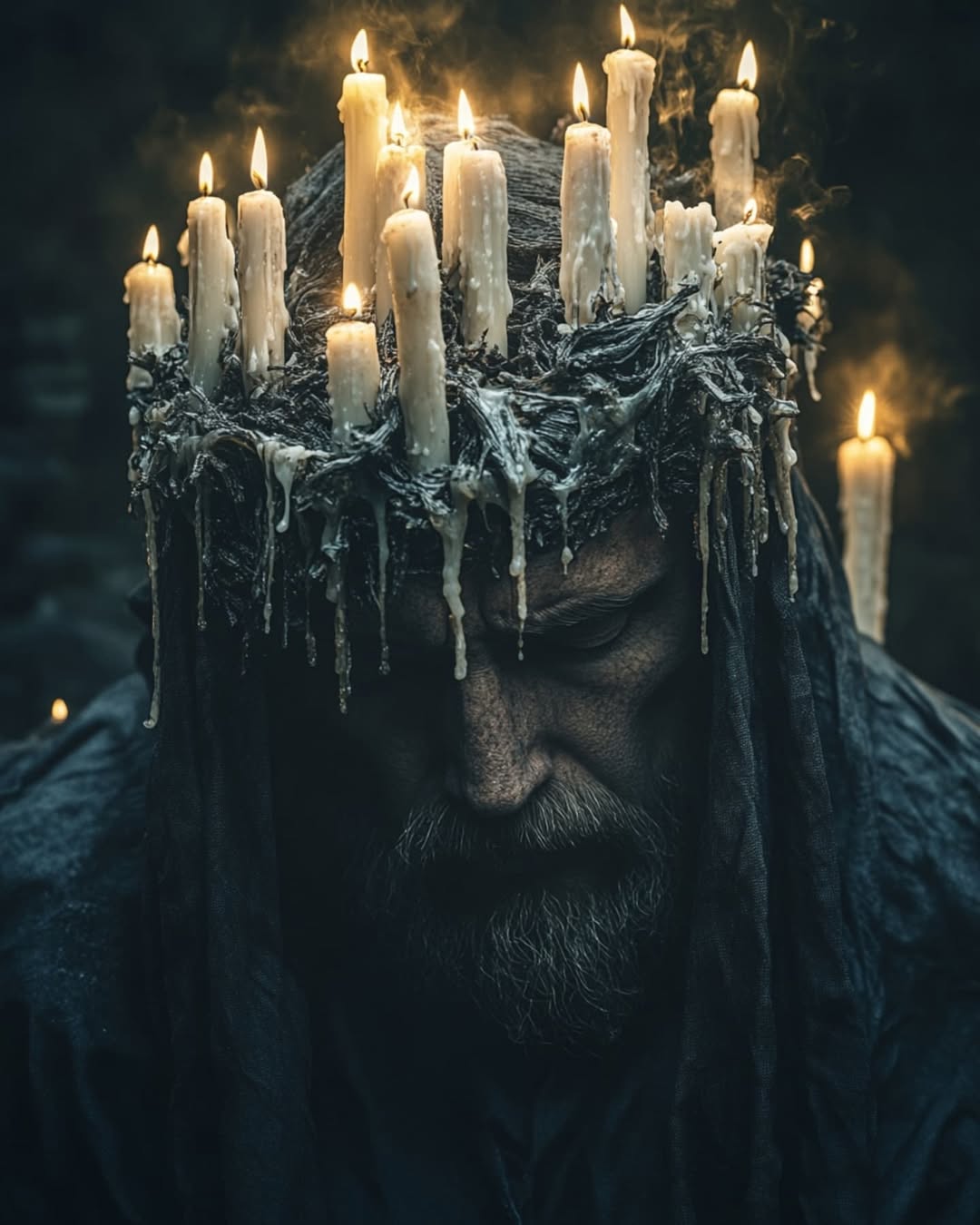

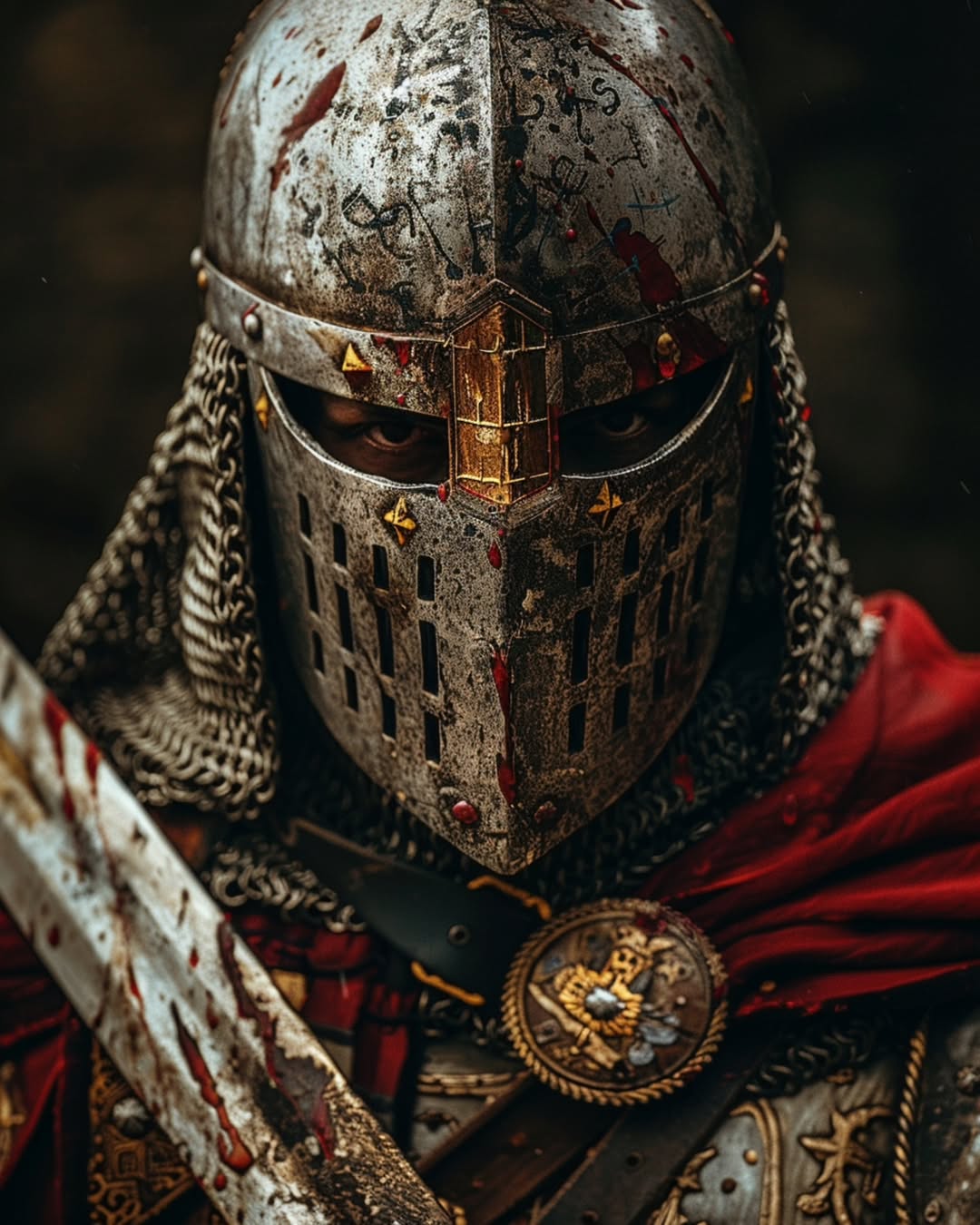
The account skullifyme features a striking collection of gothic-style horror and cursed images. These works evoke dark gargoyles and fear-inducing altar pieces that would have haunted medieval audiences. The images tap into the unsettling, supernatural elements that were designed to invoke terror and a sense of the divine’s wrath. Each piece feels like a modern reinterpretation of the chilling art that once adorned churches and cathedrals, meant to both warn and frighten.
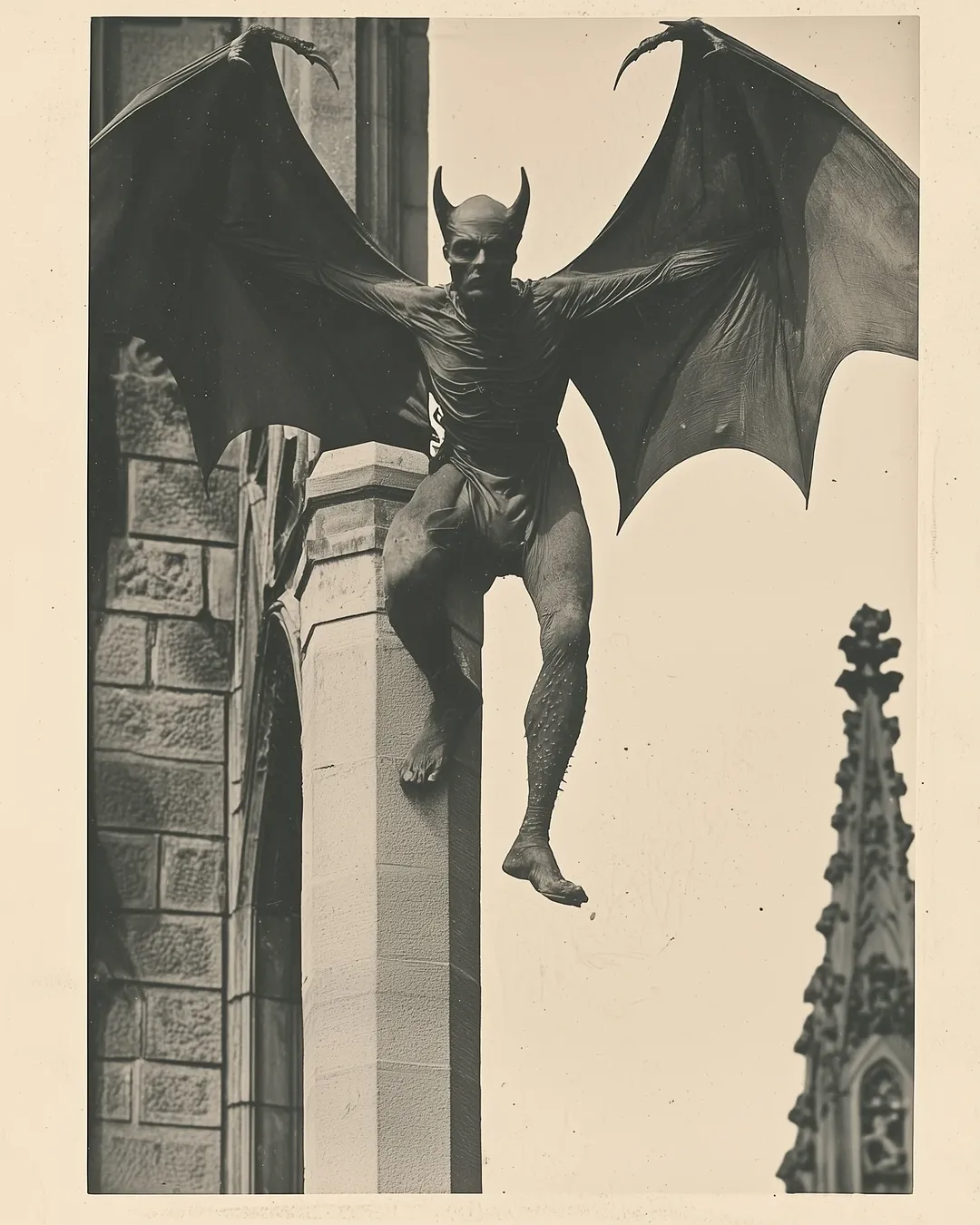
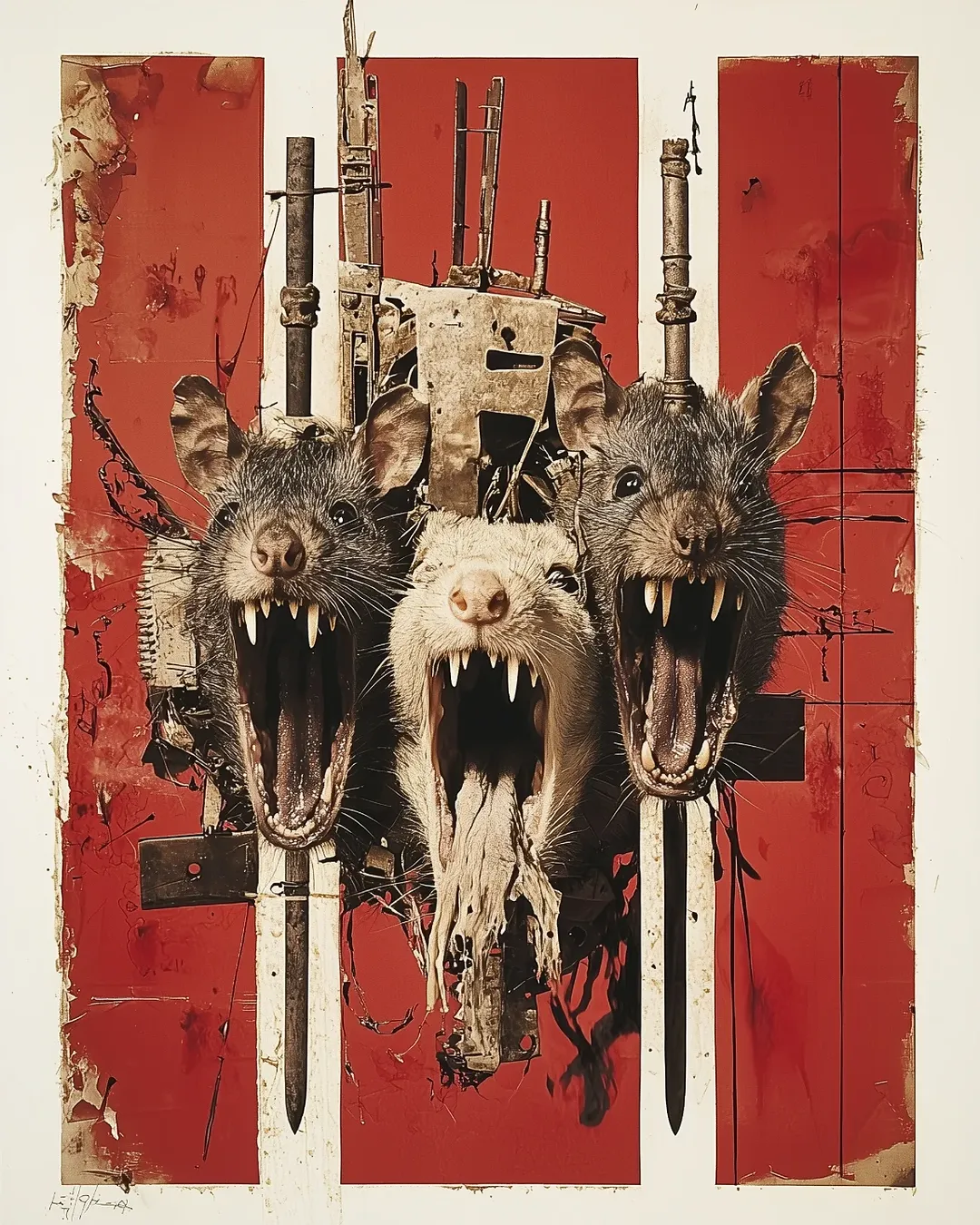


Finally, we examine Boschism, a term coined by viniciusterranova to describe his work, which blends documentary-style imagery with classical and surrealist art. Inspired by Terranova’s visit to Venice and Hieronymus Bosch’s The Garden of Earthly Delights at the Museo del Prado in Madrid, the series merges historical and futuristic elements. It explores the contradictions of an empire’s grandeur and decay, reflecting the complexity of human nature in a visually striking way. The top image depicts AI as a machine-like artist.
